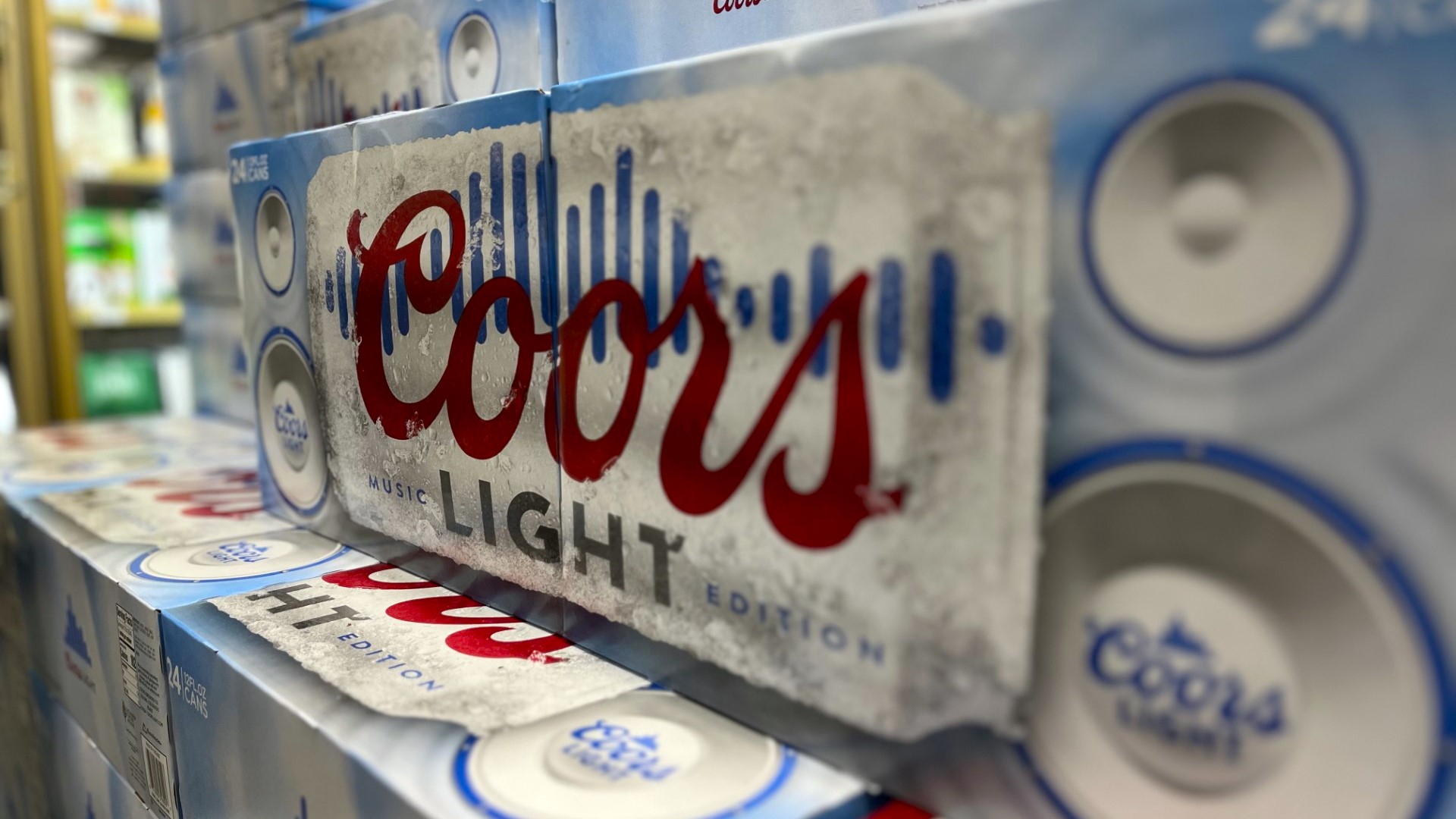✓ Beer displays are key to driving sales in grocery and liquor stores
✓ Brands on display build incremental sales
✓ Displays can be customized to fit large and small formats
Jeff Prokaski, off-premise sales consultant for Burke Beverage, is getting ready to create a display that stops customers in their tracks. The 100-case display of Coors Light and Coors Banquet will be the largest beer display at an independent liquor store in suburban Chicago, and thanks to a dramatic display piece, he’s confident it will get the job done.
Since he’s built hundreds of displays over the years, he has a clear idea of what works and, especially, what doesn’t.
“If you just drop a pallet of beer cases on the floor, it's not going to be a very effective display,” says Prokaski. “Make it eye-catching. Make consumers stop and look at it.”
While Prokaski envisions and builds eye-catching displays on site, a lot of planning goes into displays before they appear in the stores, says Meghan Means, senior manager of customer marketing for Molson Coors.
“We’re working closely with our Shopper Insights and Category teams to dig into the shopper, the segment, the market, the retailer, the channel and the time of year to make sure we are building the most compelling, creatively effective pieces of point of sale,” says Means. “We’re also partnering with our brand teams to ensure what shows up in store is not only connected to everything else a shopper may see when interacting with our brands."
Molson Coors dedicates resources to displays because they can lead to much higher sales. More than a quarter of premium light sales in grocery stores come from displays, according to Circana for the 52 weeks ending May 12, and more than half of incremental grocery dollars are due to displays. And, Means says, they drive real-time purchases.
Picking the right brands
Prokaski says that above all else, store owners want something on the floor that will sell.
“Floor space is money, so you want something that has high velocity, high turnover, something that we're going to refill,” he says. He’ll often whip out a tablet to show store owners the latest data to show which brands are selling and which can make an immediate sales impact.
For the 100-case display, the majority will be Coors Light, but he’s also adding a side stack of Coors Banquet. “We like to include the family of brands on a big display like this,” says Prokaski. “And Coors Banquet has been on fire lately.”

Catching consumers’ attention
With Coors Light’s Chill Amplified program running this summer, Prokaski decided to use a display piece shaped like an oversized pair of headphones. “People are going to look at it, they're going to get interested and they're going to come over,” he says.
Means calls this cart-stopping power. “People are pushing their carts and they're going to want to stop and see what that is,” she says.
She adds that one out of four beer purchases are unplanned. Creating something memorable helps increase the odds.
But a great display piece must be practical and needs to conform to each retailer’s store guidelines.
“Retailers might not want something that’s 10 feet tall and blocks the view of the rest of the store,” says Means. “The moment you build something that negatively affects a consumer’s experience, it becomes a problem.”
That’s where experts like Prokaski come in. Servicing independent accounts requires deft planning and a keen eye.
“Even though the scale may not be as large as a giant chain store or a giant liquor store, we can still work (an impactful display) into a smaller format,” he says.
Clear and direct messaging
Both agree that messaging for a display needs to be clear and direct. “We don’t get a ton of time with a shopper,” says Means. “They are not going to take 10 minutes to read something. You might not even have 5 to 10 seconds.”
That’s why thematic packaging and point-of-sale materials – like Coors Light’s Chill Amplified cases or a stand up of country star Luke Combs – can be impactful.
Prokaski says that QR codes are a great way to give people more information, like the ones found on the Chill Amplified display piece. “There's a QR code for people to enter for a consumer sweepstakes that excites people,” he says. “People love scanning them, especially if they have the chance to win something. I think it's going to drive sales for the program.”
A clear price is also important.
“We like to have one price on our displays, and not have a bunch of multiple different prices,” he says. “It gets people confused. Just have that final sale price for the consumer.”
Keeping display space
Getting a big display is just the first step of the process. Maintaining – and keeping – it is just as important.
Prokaski calls on his accounts at least once a week. And to ensure he keeps his space, he turns to tricks of the trade, like building so-called helix-shaped displays, whose sharp angles make it difficult for competitors to poach his hard-earned space.
“It pays dividends for the entire summer all the way through the fall,” says Prokaski. “As long as I can guarantee the space now, I'll keep it full, and we'll keep seeing the turnover on it, and it'll be the profit moneymaker for the retailer.”

